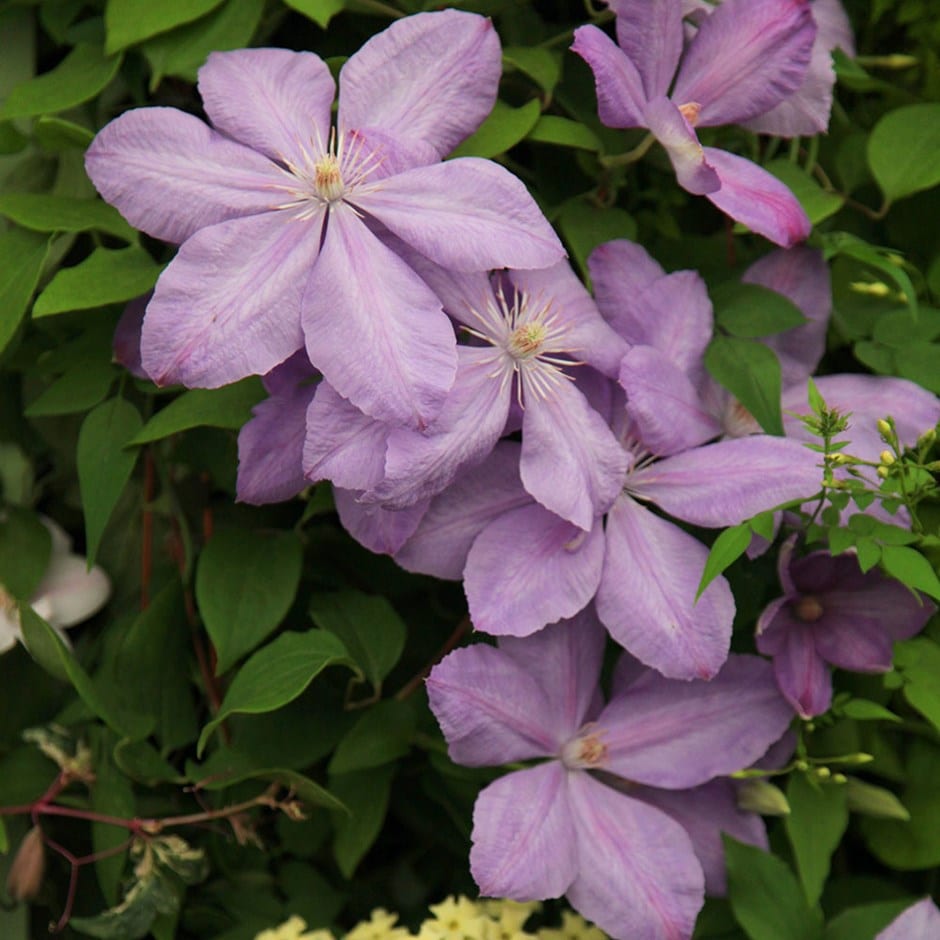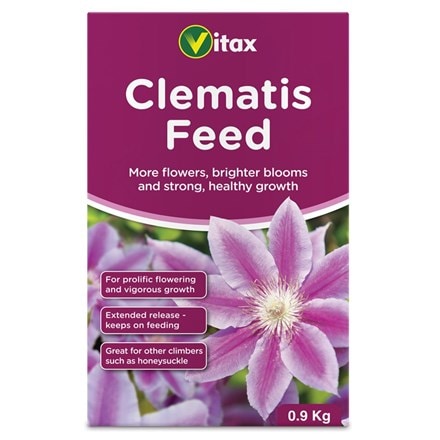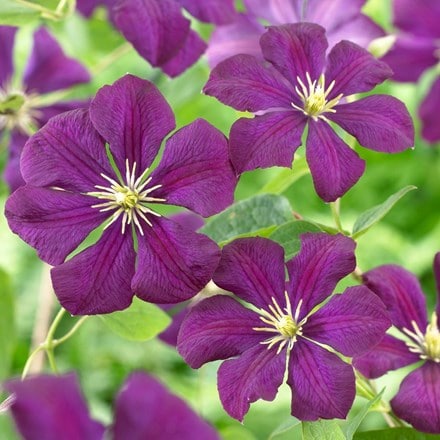Clematis 'Mrs Cholmondeley'
early large flowered clematis (group 2)
- 3 litre pot | 60cm cane
- £20.95
- In stock (shipped within 2-3 working days)
- 9cm pot | 30cm cane
- £14.99
- available to order from spring
- 2 + 1 FREE 9cm pots
- £29.98 £9.99 each
- available to order from spring
Delivery options
- Standard £5.99
- Position: full sun or partial shade
- Soil: fertile, well-drained, neutral soil
- Rate of growth: fast
- Flowering period: May to June and September
- Hardiness: fully hardy
Exquisite, pale lavender-blue flowers to 20cm in diameter, appear from May to September on this vigorous, large-flowered clematis. 'Mrs Cholmondeley' will thrive in full sun or partial shade, and it looks lovely when allowed to scramble through a larger shrub or tree - and its soft colouring means it can easily be paired with stronger purples or pink tones.
To avoid dry conditions, and to ensure good soil contact around the rootball, we advise planting climbers at least 30cm (12in), and preferably 45-60cm (18-24in) away from the base of a wall or fence. An even larger distance should be maintained when planting climbers beside an existing tree or shrub.
Clematis are happiest when their roots are kept cool and moist, so try to plant them where the base of the plants will be lightly shaded by other, lower-growing species. Otherwise, use a clematis root protector, or top-dress the rootball (avoiding the immediate crown), with a generous layer of shingle or pebbles.
Remove dead and damaged stems before growth begins in early spring, cutting all remaining stems back to where strong buds are visible.
Apply a slow-release balanced fertiliser and a mulch of well-rotted garden compost around the base of the plant - again avoiding the immediate crown.
Clematis are happiest when their roots are kept cool and moist, so try to plant them where the base of the plants will be lightly shaded by other, lower-growing species. Otherwise, use a clematis root protector, or top-dress the rootball (avoiding the immediate crown), with a generous layer of shingle or pebbles.
Remove dead and damaged stems before growth begins in early spring, cutting all remaining stems back to where strong buds are visible.
Apply a slow-release balanced fertiliser and a mulch of well-rotted garden compost around the base of the plant - again avoiding the immediate crown.
- Humans: Skin irritant; Pets: Harmful if eaten


